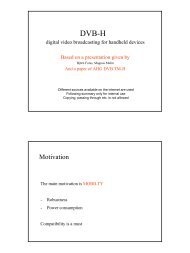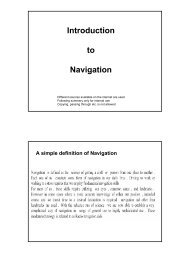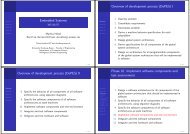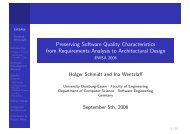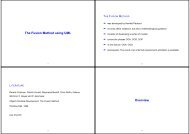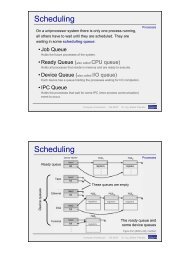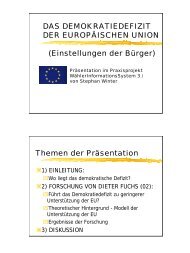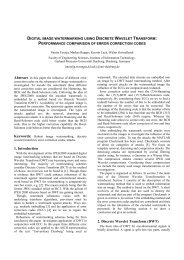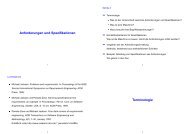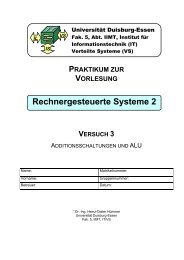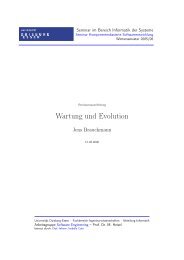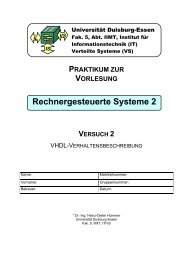Group 1
Group 1
Group 1
Create successful ePaper yourself
Turn your PDF publications into a flip-book with our unique Google optimized e-Paper software.
1.1. Context Diagram<br />
a. {pressBrake, releaseBrake}<br />
b. {pressAccel, releaseAccel}<br />
c. {sendBrakeSignal}<br />
d. {sendIincreaseSpeedSignal}<br />
e. {engineControlUsingBowdenWire}<br />
1.2. Shortcomings<br />
f. {brakeControlUsingBowdenWire}<br />
g. {increaseSpeed, decreaseSpeed}<br />
h. {sendBrakeSignal}<br />
i. {controlBrake, brakeStatusSignal}<br />
SC1: Engine cannot automatically stop (decreaseSpeed immediately) when it is very<br />
close to another car ahead of it.<br />
SC2: Engine cannot increaseSpeed automatically with the desired speed or default<br />
speed when there is distance big enough ahead of it after braking.<br />
SC3: The system can not measure the distance to an object in front of the car.<br />
SC4: The Driver must drive fully concentrate to preserve the desired speed and safe.<br />
1.3. Facts<br />
F1: The standard car is equipped with an anti-lock braking system (ABS) that has<br />
an additional digital input to activate the Brakes. The ABS digital input is<br />
realized by a serial (RS-232) connection with 9600 Baud, odd parity, and one<br />
stop bit. Values between “0” and “255” readMsgforBrake. When Driver<br />
pressBrake and then BrakePedal send brakeSignal “255” to the ABS, the car<br />
brakes as strongly as possible. Otherwise when Driver releaseBrake,<br />
furthermore send brakeSignal “0” will send to the ABS, and the Brakes are<br />
released completely.<br />
F2: Controller-area network (CAN or CAN-Bus) is a vehicle bus standard designed<br />
to allow microcontrollers and devices to communicate with each other within a<br />
vehicle without a host computer<br />
Page 2



